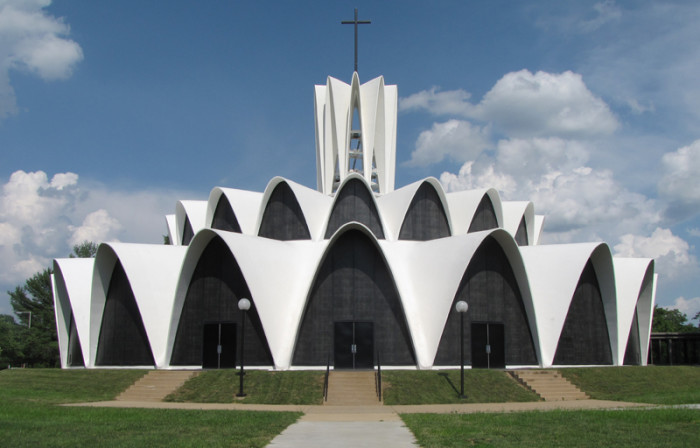Out of the same post-war optimism that produced a wealth of superb modernist residential architecture in America during the 1950s & 1960s, came an innovative approach to ecclesiastical design from some of the best know architects of the twentieth century. Transformative new thoughts in the design of religious institutions were taking shape around the county that were aligned with the same forward thinking that gave birth to some of the most notable architectural design of the last one hundred years. Mid-century modern churches represent a break from the traditional design of places of worship to reflect a changing American society that was ready for a shift in the way they lived, gathered, and worshiped. There are plenty of spectacular illustrations of modernist churches around the US that came out of this progressive era that continue to be of architectural and historical significance today.
North Christian Church
Columbus, IN
Architect: Eero Saarinen
1964
First Christian Church
Phoenix, AZ
Designed by Frank Lloyd Wright, 1949
Built 1973 (Permission obtained from Wright’s widow)
St. Peters Church
Edina, MN
Architect: Ralph Rapson
1959
Wayfarers Chapel
Rancho Palos Verde, CA
Architect: Lloyd Wright (son of Frank Lloyd Wright)
1950
 Source: Southbaycities.com
Source: Southbaycities.com
First Christian Church of Oklahoma City
Oklahoma City, OK
Architect: R. Duane Conner
1956
 Source: Roadarch.com
Source: Roadarch.com
University Unitarian Church
Seattle, WA
Architect: Paul Hayden Kirk
1960
Guardian Angel Cathedral
Las Vegas, NV
Architect: Paul Williams
1963 Source: lameekly.tumblr.com
Source: lameekly.tumblr.com
Chapel of the Holy Cross
Sedona, AZ
Architects: Anshen & Allen. T
1956
 Source: Sedonahikingtrails.com
Source: Sedonahikingtrails.com
The Abbey of St. Mary and St. Louis
St. Louis, MI
1955
St. Matthew’s Catholic Church
Zilwaukee, MI
Architects: Morris and Wesolek
1967
For a more in depth look at the Modernist Movement’s impact on religious architecture in Post-War America, check out the book ‘The Suburban Church’ by Gretchen Buggeln.
Via UPRESS:
Gretchen Buggeln shows how architects and suburban congregations joined forces to work out a vision of how modernist churches might reinvigorate Protestant worship and community. The result is a fascinating new perspective on postwar architecture, religion, and society.







